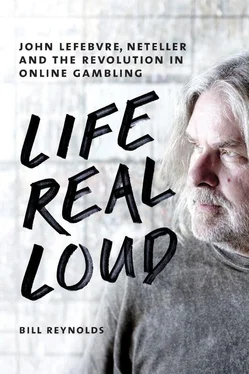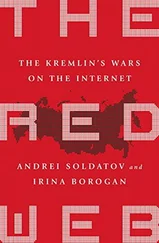We were walking across this field, checking for leeches, which you see lots of in Bhutan. You see cows and their noses are bleeding because they put their heads down to graze and the leeches get on them and there’s blood everywhere. You had to be careful because they’d get on your socks and they’d get on your legs and you’d have to pull them off or put salt on them.
When they reached the end of their hike, a landing strip greeted them. The mountain had been flattened to allow for air transport, but there was still a six-percent grade. “You’d land going uphill and take off going downhill,” says Lefebvre. “If you were taking off going downhill and needed to abort it would be tricky.”
They stood around with Indian soldiers and Bhutanese soldiers, waiting for a Soviet-era helicopter to arrive. They were to be evacuated to Sikkim, where they would get their passports stamped. “All of a sudden this huge chopper appears in the distance,” says Lefebvre. “Whop! Whop! Whop! It was a troop carrier. We put forty people on it at the top of this mountain and departed at 13,500 feet. We followed the river down into these flatlands and rice fields. When we got there we said, ‘We’re not going back.’ Bhutan was beautiful, but what they were doing with us was less than beautiful — just rushing us around — and we felt like we were in danger.”
When Lefebvre and company landed back in India, the locals didn’t know what to do with them. In fact, there was no one there in charge of letting people into the country. So they had to sit and wait. It’s India, what else is new? Hoggan recalls hours and hours wasted in a horrible airport. They finally got back to Delhi and allowed themselves a couple of days where they wouldn’t have to lose their stomachs at every hairpin turn. They ended up in a hotel in Agra, southwest of Delhi, and presto, just like regular tourists, they looked out their windows and saw the Taj Mahal. Normal stuff, for a change.
Lefebvre says, “We took the flight back on Lufthansa. There were huge first-class seats that actually folded down flat. You could lie on your side. Not these little pods. When sitting up straight, you could almost throw a sugar cube to the seat in front of you. They brought around this tray with a mound of Caspian caviar bigger than half a softball. Days before, we were eating hardboiled eggs deep-fried in chicken fat, and here we were eating caviar like it was Corn Flakes.”
Lufthansa had treated them to three kinds of caviar and champagne both ways, but somehow it tasted a lot better on the flight home.
The Man Who Gave It All Away
Within two years of going public, Neteller’s capitalization on the London Stock Exchange’s AIM swelled to over $2 billion. Over time, founders Lawrence and Lefebvre sold off sizeable chunks of their personal stock holdings. For the amount of time and effort they’d put into their project, 1999–2005, they had done well. It is difficult to quantify Lefebvre’s fortune, given the stock tanked when he was busted. But at one point, he started to wonder how they could possibly keep up with and spend all this money. Which part of the sky really was the limit here? Neteller seemed to be headed for the next galaxy, so it would be legitimate to ask the question: How much did Lefebvre want to change the world? The answer was a lot . How much money did he have to do it? A helluva lot, and there would be a helluva lot more where it was coming from. He was thinking he needed a foundation and targets for the money. He was trying to figure out how to change the world. When he got started, he managed to spend tens of millions on things he believed in.
Here is one small example — one of many — of giving it all away. Lefebvre hooked up with Flora MacDonald, the octogenarian, one-time Secretary of State for External Affairs who has been devoting her post-political years to humanitarian work. MacDonald’s charity, Future Generations Canada, helps support women and children in Tibet and Afghanistan. Lefebvre could get behind that. He was helping Daniel Taylor’s project in Tibet, so why not Flora MacDonald’s in Afghanistan? He gave money to support Afghan communities who were forming a joint-village shura , or council, of sixty-five villages in the Shaidan District of Bamyan Province. He spent money on mosque-based literacy programs for women and children — programs that spread to over 350 communities in three provinces. He supported a community health worker program. He supported reforestation in the Shaidan Valley of Bamyan Province and the erection of check-dams and the digging of ditch irrigation systems to mitigate drought in Ghazni Province. And he helped to establish English and computer courses for 135 girls and boys in the Jaghori District of Ghazni Province.
Lefebvre wasn’t just throwing money at every cause in sight; he was also saying to all his friends, “Write yourself a job description and come and play.” Geoff Savage says, “He did that with most of us.” Savage himself wasn’t so sure — he was making a good living as a lawyer for the banks — but Lefebvre kept at him. And after the extravagant wedding reception in Costa Rica in the fall of 2003, Savage thought seriously about what it would take to retire himself. More time went by, and he didn’t see Lefebvre again until the Athens Olympics, where Savage witnessed his friend’s marriage meltdown. By November 2004, now ensconced in Malibu 1, Lefebvre went right back to hammering on Savage to retire his law practice and become the CEO of John.
Savage says, “At that point in time he was a quarter-of-a-billion-dollar man. We decided there was going to be no active business and we were going to be doing philanthropy. I started studying up on it.”
Savage needed more than six months to unwind his twenty-five years’ worth of clients, but since he now had agreed to join Lefebvre, they started to look for places to live. Savage figured Lefebvre might want to live in Ireland to be near his daughter, but no, he wanted to stay in Western Canada. Savage visited Lefebvre in Malibu, and the conversation focused on dwellings. Lefebvre asked Savage, “Well, Geoff, if you could live anywhere in Canada, where would it be?”
“Southern Vancouver Island,” Savage told his friend. “Somewhere in that vicinity. It has the best weather.”
Lefebvre got on his computer and found some high-end real estate on Salt Spring Island. They flew up to have a look. Savage says, “We looked at ten houses in a day, and at the end of the day he picked the one on Sunset Drive. A month later, he closed. Then he said, ‘Now let’s buy you a house, Geoff.’ I said, ‘Yeah.’ I’m not going to argue too vociferously about this.”
By December 2004, Lefebvre was showing up in Calgary, wanting to buy the Calgary Stampeders football team, invest in movies, invest in seismic programs — whatever caught his fancy. “He kept going on the business end of things, buying places in Calgary, none of which came through,” says Savage. “He was trying to buy the Bank of Montreal building, run it as a nightclub, a private club. He was going in fifteen different directions. Meanwhile I’m going, ‘John, I’m trying to wind down my practice, not wind it up.’”
But Lefebvre had difficulty heeding caution. Most of the time he barreled ahead: “He has unbound enthusiasm and no real restraint,” says Savage. “He can say today, ‘I have to cool my jets,’ but then he gets wound up on something, or somebody else shows up with a great idea and he’s taken with it. The way I put it is, there’s what you want and there’s what you need. And the way he’d put it is, what I want is what I need. At that point I go, ‘John, it’s your money.’”
* * *
Savage says the whole idea from the beginning was to give it all away. When Lefebvre returned to Canada, he was able to bring back his fortune, untaxed, because of his residency status in Costa Rica. The Canadian government allows citizens to come back to the country and bring wealth earned abroad back with them. Once they’re in the country again, any money earned in Canada, from that day forward, gets taxed. That was a sweet situation, yet Lefebvre did not pull the typical business move. He did not take action to protect his millions.
Читать дальше












